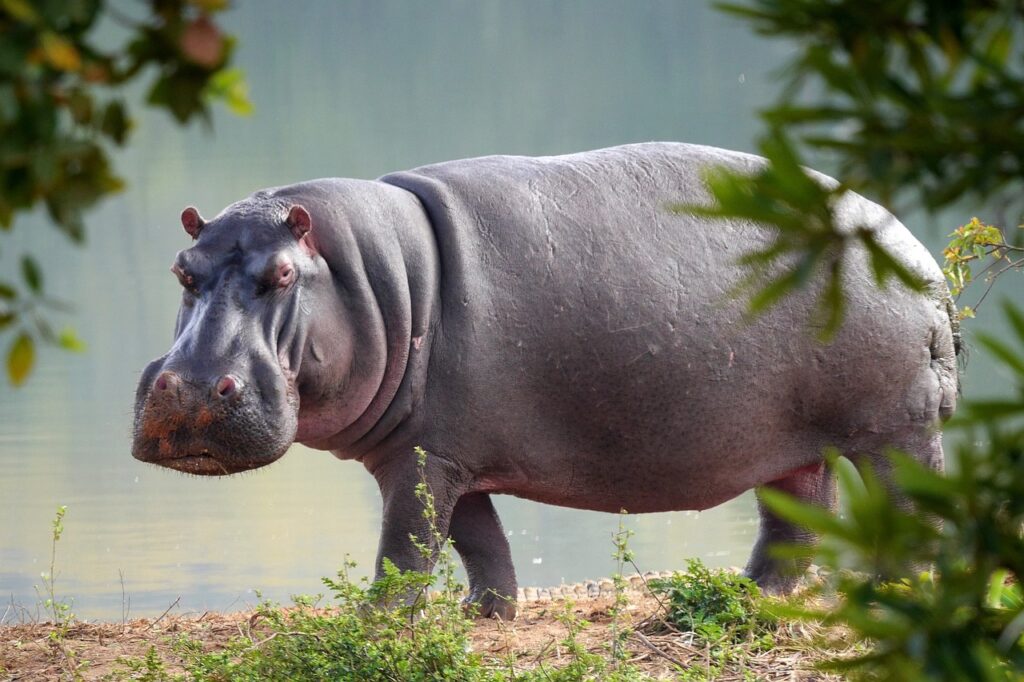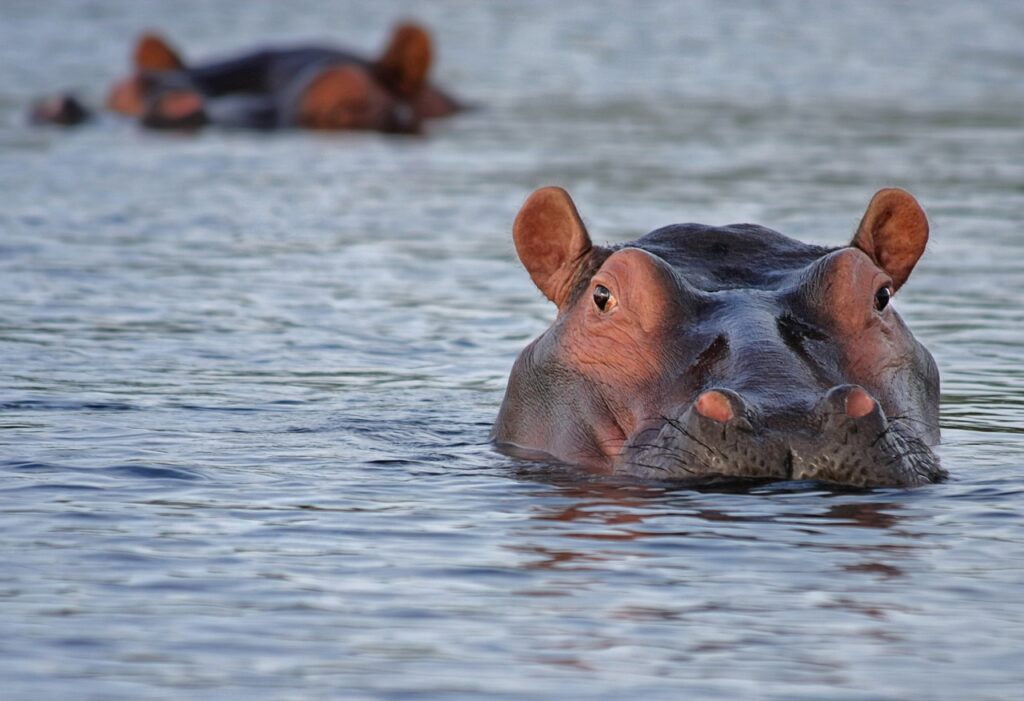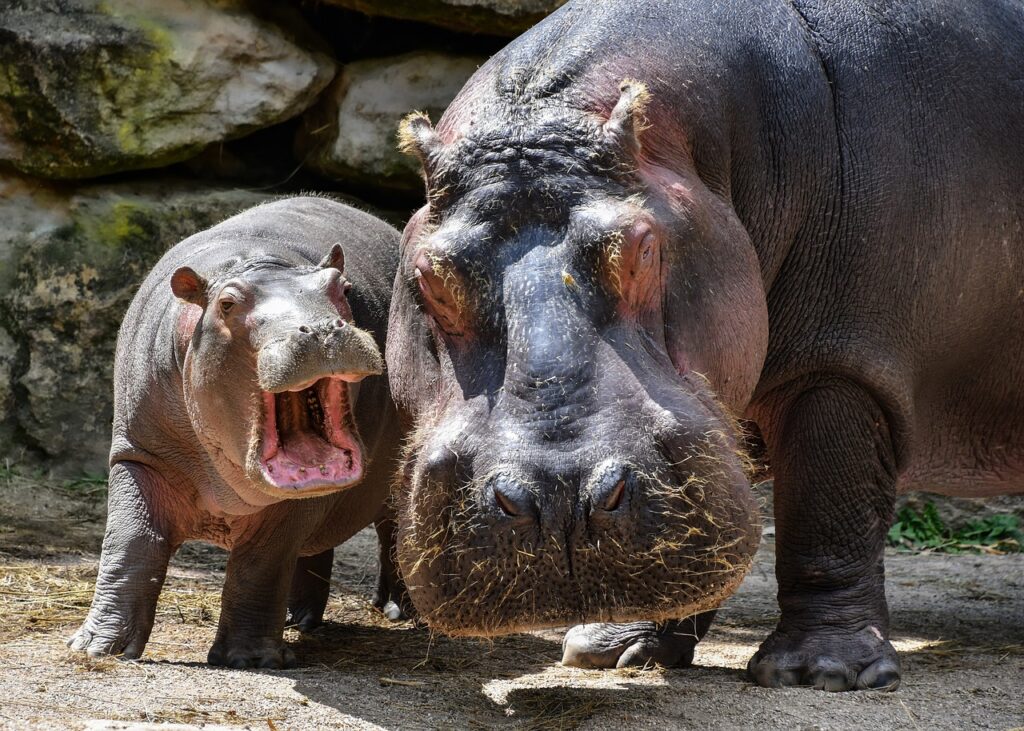Discover the fascinating world of hippos! Learn about their behavior, habitat, diet, and why they’re one of Africa’s most intriguing and powerful animals
When you think of the wild, the first animals that may come to mind are lions, elephants, or maybe even giraffes. However, one of the most impressive and often misunderstood animals in the animal kingdom is the hippopotamus, or hippo for short. These massive creatures are often depicted as gentle giants, but there’s so much more to their story than meets the eye.
In this article, we’ll dive deep into the world of the hippopotamus, exploring everything from their behavior and habitat to their surprising traits and role in the ecosystem. Whether you’re an animal lover or just curious about one of Africa’s most iconic animals, this post will provide an in-depth look at the hippo and its place in the natural world.
The Basics: What Is a Hippopotamus?
A hippopotamus is a large, mostly herbivorous mammal native to sub-Saharan Africa. Despite its massive size, the hippo is often mistaken for a calm, docile animal due to its slow-moving nature on land. But don’t be fooled – hippos are known for their territorial behavior and can be extremely dangerous if threatened.
The name “hippopotamus” comes from the ancient Greek words hippos meaning “horse” and potamos meaning “river.” This reflects the hippo’s love for water and its semi-aquatic lifestyle. Hippos spend a significant portion of their lives submerged in rivers, lakes, and swamps, where they can keep their massive bodies cool.
Fun Fact: Hippos are closely related to whales!
Although they live in water, hippos are not related to aquatic animals like fish or seals. Instead, they share a common ancestor with whales, dolphins, and porpoises, a fact that might surprise many people. This connection highlights just how unique and interesting the hippo’s evolution is.

Hippo Size and Physical Characteristics
One of the most striking features of the hippopotamus is its size. Adult males, or bulls, typically weigh between 3,000 and 4,000 pounds (1,400 to 1,800 kg), while females are slightly smaller, weighing around 2,500 to 3,000 pounds (1,100 to 1,400 kg). Despite their bulk, hippos can run surprisingly fast on land, reaching speeds of up to 30 km/h (19 mph) over short distances.
Body Features
- Huge Mouth and Teeth: Hippos are famous for their large mouths, which can open up to 180 degrees. Their tusks, which are actually elongated canine teeth, can grow up to 50 cm (20 inches) long. These tusks are used for defense, dominance displays, and sometimes fighting other hippos.
- Skin: A hippo’s thick skin is another key feature. It’s incredibly tough and resistant to cuts, helping the animal survive in the harsh environments of rivers and lakes. However, the skin is also prone to drying out, which is why hippos frequently spend time submerged in water to keep cool and hydrated.
- Eyes and Ears: Hippos have unique eyes and ears positioned high on their heads. This adaptation allows them to keep most of their bodies submerged in water while still being able to see and hear their surroundings. Their nostrils are located on the top of their snouts, enabling them to breathe while mostly underwater.
The Hippo’s Habitat: Water, Water Everywhere
Hippos are semi-aquatic creatures, which means they need both land and water to thrive. They are found in rivers, lakes, and swamps across sub-Saharan Africa, with a preference for freshwater environments.
Habitat Preferences
Hippos typically prefer slow-moving, shallow rivers and lakes where they can easily submerge their bodies. They often create “hippo highways” by wallowing in the mud along the banks and creating well-worn paths. These areas are ideal for the hippo because they provide shelter from the sun, protection from predators, and a safe place to socialize with other hippos.
In addition to staying cool, the water serves as a natural defense mechanism. Hippos are less vulnerable to predators in the water, as they can move swiftly and navigate easily. However, they are also vulnerable when they venture onto land to graze, which is why hippos are very territorial near water sources.
Why Do Hippos Need Water?
Water plays an essential role in a hippo’s life. The primary reasons they stay submerged for long periods include:
- Thermoregulation: Hippos are highly susceptible to overheating. By staying in the water, they can regulate their body temperature, which can be crucial in the hot African climate.
- Breathing: Although hippos spend much of their time underwater, they can hold their breath for up to 5 minutes. They breathe by rising to the surface, where they automatically open their nostrils to inhale, often without fully waking up.

Hippo Behavior: Gentle Giant or Fierce Fighter?
Despite their calm and sluggish appearance, hippos are actually quite territorial and aggressive, especially when they feel threatened. They are known to be one of the most dangerous animals in Africa, responsible for more human deaths than lions or crocodiles.
Territorial Nature
Male hippos are especially territorial and will fight to protect their waterholes and grazing areas. These territorial disputes are usually settled with loud, aggressive vocalizations and displays of force. Hippos often use their sharp tusks to fight one another, sometimes resulting in serious injury or death.
While females are less territorial, they are still protective of their young and will fiercely defend them from predators or intruders. A hippo mother can weigh over a ton, so it’s best not to challenge her!
Social Behavior
Hippos are social animals and typically live in groups called pods, schools, or herds. A pod usually consists of 10 to 30 individuals, although larger groups can sometimes form. These groups are led by an alpha male, who guards the territory and mates with the females. Female hippos tend to stay within the same pod throughout their lives, while males often leave to find new groups when they mature.
Within the pod, hippos communicate with each other using a variety of sounds, including grunts, growls, and bellows. These vocalizations help maintain social bonds and warn of potential threats. Hippos also spend a lot of time grooming each other, which is a sign of friendship and cooperation within the group.
Hippos and Their Diet: Herbivores with a Big Appetite
Although they are known for their fearsome appearance, hippos are herbivores. They primarily feed on grass, consuming up to 40 kg (88 pounds) of vegetation each night. Hippos are nocturnal grazers, spending the night on land to feed and returning to the water during the day to rest.
Their massive size means they require large quantities of food to sustain themselves. Hippos use their sharp teeth to graze, but they don’t chew in the same way we do. Instead, they tear up large clumps of grass and swallow them whole, which is why they need to consume so much food.
Fun Fact: Hippos can graze up to 10 km (6 miles) in one night!
This large grazing area is essential for hippos, as they need a lot of food to maintain their massive size. Interestingly, hippos rarely drink water, as they get most of their hydration from the plants they consume.
Hippo Conservation: Protecting These Majestic Creatures
Despite their size and strength, hippos face numerous threats in the wild. Poaching, habitat destruction, and conflicts with humans have led to a decline in their population. Hippos are often hunted for their ivory tusks, and their natural habitats are being destroyed due to deforestation, pollution, and urbanization.
The Status of Hippos in the Wild
According to the International Union for Conservation of Nature (IUCN), hippos are listed as “Vulnerable” due to the ongoing threats they face. Although they are protected by law in many African countries, illegal hunting and the destruction of their natural habitat continue to put pressure on hippo populations.
Conservation efforts are underway, but it will take a concerted effort to ensure the survival of these incredible animals. There are various programs aimed at protecting hippos and their habitats, as well as raising awareness about the importance of these creatures to the ecosystem.

Conclusion: The Hippo, an Icon of Africa’s Wildlife
Hippos are truly remarkable creatures that play an essential role in the ecosystems of sub-Saharan Africa. Despite their fearsome reputation, they are a symbol of the region’s wildlife and provide an invaluable contribution to biodiversity. From their complex social structure to their unique physical traits, hippos continue to captivate animal lovers and researchers alike.
If you’re ever lucky enough to witness a hippo in the wild, take a moment to appreciate their beauty and strength. These giant herbivores are a reminder of the delicate balance of nature and the importance of protecting the habitats that sustain them.
By supporting conservation efforts and respecting their natural environment, we can help ensure that future generations will continue to admire and learn from these fascinating creatures.
Softest cuddle companion your baby will love – Click to discover! 🦛💖
